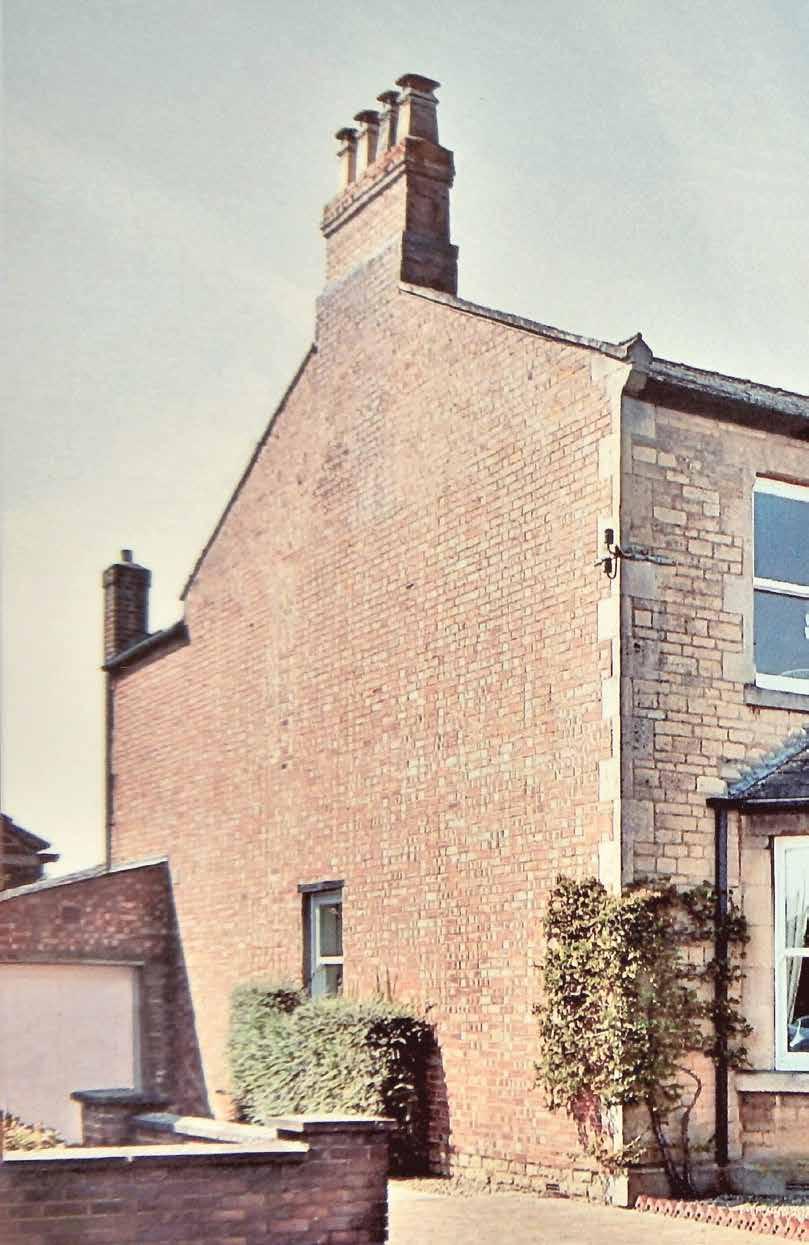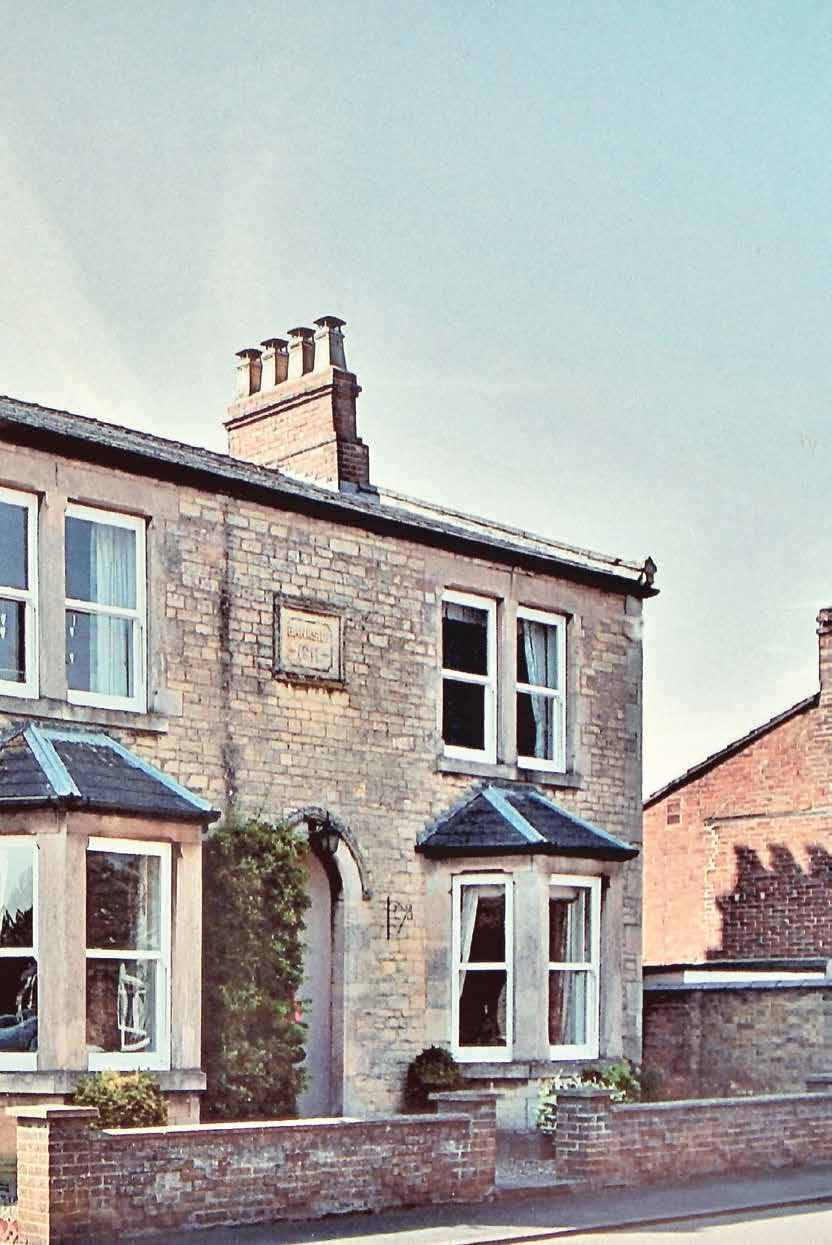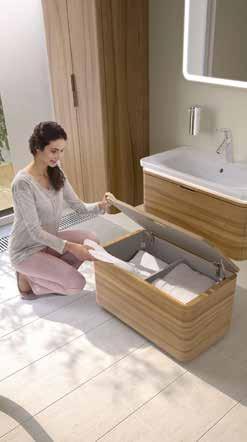
7 minute read
Bankside House
FEATURE Bankside
House
Advertisement
In the days when the majority of men in Deeping St James were agricultural labourers, the Buck family must have seemed like property magnates! William was a baker who owned the bakery in Church Street. The Buck’s also owned ‘The Ship Inn’ in Eastgate and ‘The Woolpack’ in Horsegate.
In the late 1840s the cottage, now 61 Church Street, was in the ownership of Thomas, the son of William and his wife Elizabeth. After the wedding of Thomas’s younger brother James Parker Buck to Ann Loweth in 1847 they moved into the cottage. A little later on in 1855 at auction Thomas bought two small houses with their yards and gardens adjoining another two roods of land where 63 and 65 Church Street now stand. Two years later Thomas added to his portfolio by buying the two cottages that stood where Bankside House now stands.
When Thomas died his eldest son, James Tansley Buck inherited the cottages. James was born in 1844 to Thomas and wife Jane Buck née Tansley. After leaving school he served an apprenticeship with John Crowson and he qualified as a Master Builder and Carpenter and set up his own business in South London, working in Bermondsey and Camberwell as well as returning periodically to supervise the building of property in Deeping St James.
On the death of his Uncle James in 1901, James pulled the old cottage at 61 Church Street down and built the one that survives today. He also had the cottages at 59 Church Street demolished in order to build Bankside for his retirement. It had been his long-held ambition to retire to a new house in Deeping St James, but pressure of work elsewhere kept him away from the task himself. Instead Messrs Alfred Arch Crowson were contracted to build number 59. Alfred was the son of James’s apprentice master, John. James would return from London from time to time to check on progress, staying with his sister Susannah Panton who lived with her family at 63 Church Street.
Looking up, the date stone of 1911 is visible and it is true that with his commitments elsewhere James did not get the time to live out his retirement in Deeping St James, but he did die in his beloved Deeping on 30th December 1915. The properties were left to two nephews, William and Thomas Buck, who by this time had moved to America and sold the properties on to their second cousin, another James Parker, the son of James Parker Buck and Ann, née Loweth. The life of an agricultural labourer was not for James Parker who had joined the Army in 1867, serving with the Royal Engineers, in 1871 recorded as being at the school of Military Engineering in Gillingham, Kent. After serving for more than eight years he left to join the West Yorkshire Constabulary. On his 1876 application form he is described as 5ft 10 and three quarter inches with a fair complexion, hazel eyes and brown hair. But the life of a PC did not suit him and he returned to the Army in 1877 as a 2nd Corporal in the Royal Engineers. Three years later he married Louise Jeanette Moores, at which time he was a NonCommissioned Officer in the Royal Engineers. Louise was from Poole in Dorset and before her marriage had been a draper’s assistant, working in Bournemouth. James served in Egypt fighting in the Second Egyptian War, protecting the Suez Canal and helping to build a railway for which, in November 1882, he was presented
with an Egyptian War Medal by Queen Victoria at Windsor. By 1891 James had become a Warrant Officer and was living in St Paul’s, Deptford, with his wife who was always known by her middle name, Jeanette. According to Chelsea Pensioners’ Records Service number 10283 James left the Army later that year and took up the post of Superintendent of the City of London Electric Lighting Company at Battersea Power Station. The couple lived at 55 Endwell Road, Brockley, with James’ second cousin Elizabeth Blessett (Annie) from Deeping St James. who acted as companion to Jeanette. They also had a general servant, Florence Tullett. from Greenwich. In 1916 James and Jeanette retired to Bankside, Deeping St James, where they lived in some style. In 1923 James stood as a Conservative candidate for the Rutland and Stamford Division and although he was unsuccessful he continued to work tirelessly for the party. His wife died three years before him in 1930 and his obituary in the Stamford Mercury recorded that ‘The death of James Parker Buck at the age of 82 has removed a well-known and respected figure from the Parish, he had been in indifferent health for some time but only confined to bed for a few days. He had served with the Horse Guards and with the Royal Engineers.’

In his will he left Bankside to his nephew, Parker George Buck, with the proviso that he should live there and not sell or mortgage the property in his lifetime. Parker George also received all the furniture and effects as well as four-and-a-half acres in Linchfield, along with his share in the Market Deeping Angling Society. James’ niece, Margaret Cooke, received £300. Elizabeth Annie Blessett received the house and garden at number 61 Church Street which was tenanted by Mr W. Henfrey. She also received a silver card tray,

a Wedgwood jug and £400 in recognition of her devoted attention to his late wife. Annie’s sister Sarah, who had been their cook, received £200 and to share in the house left to Annie. His sister, Jane Bulley, was left £100. In total the estate was valued at £2,937. 14s. 2d.
Parker George Buck, born in 1894, was the son of George and Kate Buck. Sadly his father died just after his birth and Kate returned to Ryhall with young Parker and her eldest child Margaret, where she kept a grocer’s shop. However, she then moved to Peterborough where she had had another child, Walter. Parker was employed as an iron moulder’s apprentice in the 1901 Census. He enlisted in the Army in 1915 and served with the RASC as a Private. He was later transferred to the Army Service Corps after receiving an injury on the front line. He was discharged in 1919 and was awarded the British, Victory and Star Medals as well as a Silver Badge. He returned to Peterborough, resumed his career as an iron moulder and lived in Craig Street.
After receiving his inheritance he married Ada Pridgeon of Peterborough and the couple lived at Bankside with Parker’s brother Walter, who was a Clerk with the North Eastern Railway. On his death in 1945 he left the house and all its contents to Ada and £200 to Walter. His estate was valued at £1,918. 8s 5d. Ada remained at the house until 1951 when she sold it and moved to St Paul’s Road in Peterborough.


Sarah Blessett, living with her sister Annie at number 61, had died in March 1942 leaving effects of £1,036. 14s 11d to Annie and Fanny Blessett, a spinster. When Annie died in 1964 she left £6,119.12s. and the house was sold, proceeds going to her nephew John and the remaining half to the children of her brother David.
After, Jack Cook, an engineer, and his wife Netta lived at Bankside with their son and daughter but after the family had grown the couple had a bungalow built in the grounds alongside the house. They cut a neat couple as they went for a walk every day at midday and eventually, after the death of Netta, Jack was the first person to buy one of the converted barns where the Manor House had stood on the corner of Hereward Way and Church Street.

During the 1970’s Eddie Bond and his wife ran Bankside as a Bed and Breakfast. A colourful local character with a head of silver hair, Eddie drove a large car and worked as a postman. Eventually, when John and Sharon Aldridge bought the house, he bought their bungalow at the top of Millfield Road, Deeping St James, and tended a magnificent garden there. Mr A.A Crowson
Family run company Free, no obligation design service Supply only or supply with installation Siemens and Neff Master Partner






43-45 Bridge Street, Deeping St James Lincolnshire PE6 8HA Tel: 01778 346415 www.devonportskitchensbathrooms.co.uk








